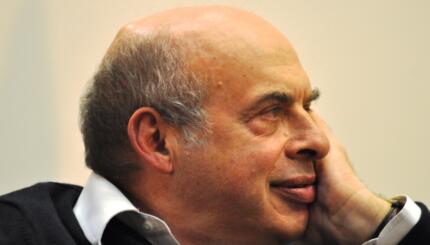Reprinted with permission from Sephardim in the Americas: Studies in Culture and History (The University of Alabama Press).
A friendly rivalry has existed between Savannah and Charleston as to which is the older Jewish community. Savannah can date its origins as an organized Jewish settlement to 1733, its congregation to 1735. However, periodic losses of population led to lapses and revivals. Charleston can date its first Jew of record to 1695, when the governor used an unnamed Jew as interpreter to a delegation of Spanish-speaking Indians. Two years later, four Jewish names, one undecipherable, were appended to a petition. The others were Abraham Avila and Jacob Mendes, Sephardim; and Simon Valentine, an Ashkenazi and a nephew of New York’s Asser Levy.
First Synagogue
Avila and Valentine lived out their lives in Charleston, but few Jews joined them. It was not until 1749 that 10 heads of family, led by Joseph Tobias, were available to form a minyan, the quorum needed for the congregation they named Beth Elohim ("House of God"). Of the founding families, six were Sephardic, four Ashkenazic, including Mordecai and Levi Sheftall, both of whom were temporary residents from Savannah.
The Sephardic majority, evidently determined to dominate decision-making, accorded their best-informed layman, Moses Cohen, the honorific titles Hacham v’Abh Beth Din ("chief rabbi and chief of the ecclesiastical court"). Isaac da Costa, a leading merchant, functioned as hazzan [cantor]. It was he who purchased ground for a cemetery in 1762. Two years later he deeded it to the congregation, but named as trustees the leaders and membership of Sephardic congregations in London, "King’s Town, Jamaica," and "Bridgetown, Barbados." In the deed a dash separates these from the three North American congregations, also named with their mixture of Ashkenazic and Sephardic leaders.
With your help, My Jewish Learning can provide endless opportunities for learning, connection and discovery.
Charleston’s Jewish growth was interrupted by the Revolution. In 1780, the British captured the city, and Da Costa joined other Jewish patriots in Philadelphia. In his absence, the congregation’s leadership was assumed by Ashkenazim. When peace was declared in 1783, Da Costa returned to Charleston. He died within a few months, and his remains were interred in a separate cemetery at Hampstead, subsequently described in the local press as belonging to "the Portuguese Congregation of this City, called "Beth Elohim Unveh Shallom."
A split had developed, but the two groups seem to have reunited sometime between 1791, when the Ashkenazim determined to abandon their rented facility and build their first synagogue building, and 1794, when it was dedicated. The agreement seems to have included abandoning the separate Sephardic cemetery, but this led to further friction and compromise, for Sephardic burials continued there until 1847.
Largest Jewish Population
By 1800 Charleston had the largest Jewish population of any city in the United States, numbering about 6oo. The congregation maintained strict control over the actions of individual members. Rev. Moses Cohen and his successors as hazzan were all Sephardim, with the exception of Abraham Alexander, and the Sephardic ritual prevailed.
Some restlessness must have existed, though, for in 1820 the congregation issued a new and very stringent constitution. The hazzan of the moment was another Ashkenazi, Rev. Hartwig Cohen, a native of Wartha, Poland. He was dismissed in 1823, and his place was taken by Selomoh Cohen Peixotto, a native of Curaçao, where he had served as ribi (teacher) and shohet (kosher butcher). He had left during the British occupation of the Dutch island between 1807 and 1816 to become hazzan in St. Thomas, and had come to Charleston in 1818.
Peixotto’s election may very well have been a precipitating factor in the formation a year later of the Reformed Society of Israelites. One of their complaints was that the Spanish and Portuguese prayers and hymns comprising Beth Elohim’s liturgy were meaningless to the membership. However, when Reform leader Isaac Harby prepared a prayerbook for the insurgents, it was the Sephardic prayerbook that he translated.
The two groups eventually reunited, but when a new synagogue, built by David Lopez, a Sephardi member, replaced the old one, which had burned down in 1838, the agitation for an organ and other reforms led to another break-off.
The new Orthodox congregation, Shearith Israel–led at first by Jacob de la Motta, formerly of Savannah–still followed the Sephardic minhag [custom]. It prospered while Beth Elohim struggled. As late as 1854, Beth Elohim’s Reform proclivities undoubtedly eliminated it from a benefaction in the will of New Orleans philanthropist Judah Touro. Following the example of Rebecca Gratz of Philadelphia, Miss Sally Lopez instituted a Sunday school in 1838 which she directed for four years, obtaining weekly lessons copied for her by Rebecca Gratz.
The depredations of the Civil War and the economic depression it engendered in the South led to a reunion of the two congregations in 1866. They agreed to use the "Portuguese minhag" with a shortened version of the Orthodox service. Rev. Joseph H. Chumaceiro, son of Curaçao’s hazzan, was elected in 1868 and served for six years. By 1875, the congregation had acquired a growing influx of German immigrants who were assuming leadership. The liturgy was modified and the board agreed to accept the prayerbook of its incumbent hazzan, David Levy.
Ashkenazi
Pronounced: AHSH-ken-AH-zee, Origin: Hebrew, Jews of Central and Eastern European origin.
Sephardic
Pronounced: seh-FAR-dik, Origin: Hebrew, describing Jews descending from the Jews of Spain.


